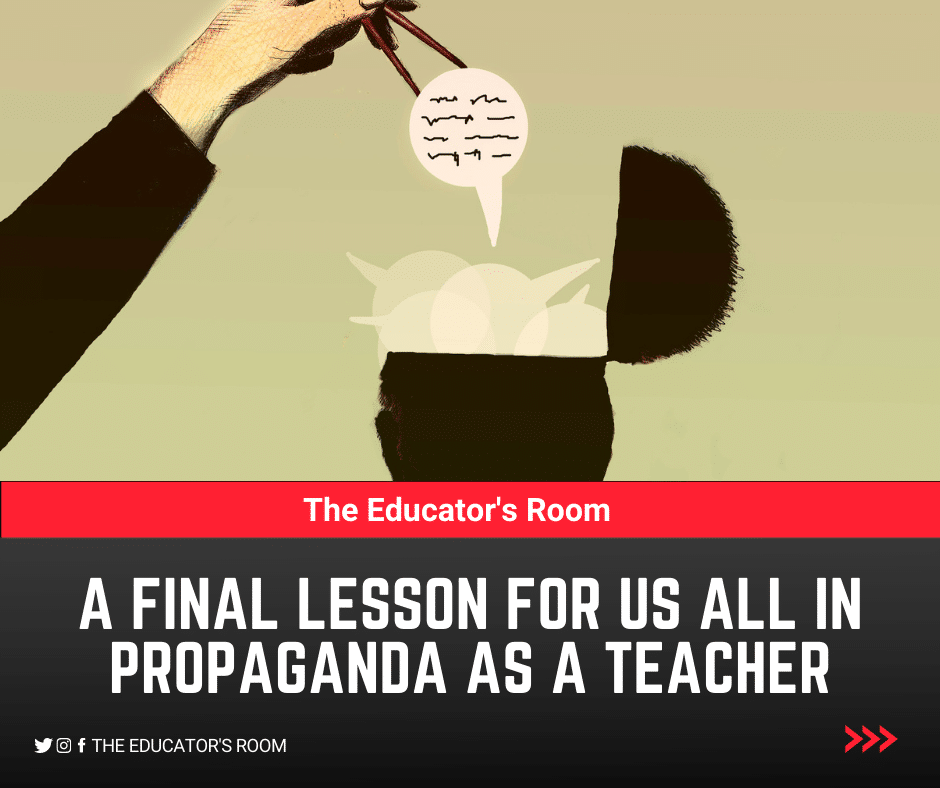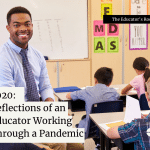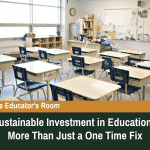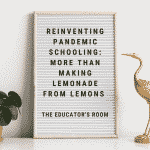Recently, a teacher in Paris named Samuel Paty was beheaded after giving a lesson on the importance of freedom of thought. With all going on in the news these days, I barely noticed it at first.
Yet, as I wrote recently, a dangerous ideology that subverts free and intellectual discourse is growing and making inroads into my classroom- never more so in my two decades of teaching than right now.
The undertone that this was an attack by religious extremism may conceal the true worry I have for my students: the rise of theories, thoughts, and ideas that are not based on factual evidence, and as the case may be, have nothing to do with religion.
And what happened in Paris today is a stark reminder to us of why ideas like this, whether seemingly benign, purposeful, or without intent, do not belong in public education.
It’s important for us to understand why.
You see, while the angry mob explores the rabbit hole that has been discussed ad infinitum by ultra-opinionated if not simply racist media pundits, I’d like to point out that this gentleman gave his life for something far greater than an argument for talking heads. He gave his life so that we may have one in the first place.
And it’s no surprise that it comes to us from a teacher of history because history is how we best understand his final lesson–a lesson for us all.
The Flat Earth Society Has Members Around The World
A few years ago, a dad kept me after my yearly Star Party to ask me a question. Standing among the solar system models and exhibited projects, he wanted, in complete sincerity, for me to teach the alternative theory of the cosmos too. I hadn’t known there was an alternative but he assured me that there was indeed! It seemed at the time as though it were an isolated incident and yet this year, a young man in my classroom wrote in the chat that he believed in the theory of a flat earth himself. And they aren’t alone. A recent poll shows that only 66% of those young adults between age 18 and 26 have “always maintained a belief that the world is round.” Compare that to the generation of students not graduating under NCLB (collectively 84%, a story for another time perhaps). What is responsible for the dip? My guess is that it may have something to do with how teachers like myself were asked to focus on reading comprehension and math to the exclusion of many other subjects because “they’ll get the rest later.”
Our need to teach factually should give us more than concern. But what does it have to do with Mr. Paty?
Mr. Courtney, I’m Going to a Riot!
Recently a student at school told me that he had been following videos on Tiktok, around the time of the election. Luckily, he was physically in my classroom and so we were able to have a long conversation. We discussed his ardent belief in false information that was clearly inappropriate for a 10-year-old to digest. The moment reminded me of a recent documentary called The Social Dilemma playing on Netflix.
And my young student isn’t alone. When polled, more and more adults, but also children, are getting their information from social media, and algorithms on these platforms are presenting them with ideologies they would like to hear about, not those of factual substance.

It’s that very lack of perspective that Paty was attempting to help his students conceptualize. Why?
A Brief History of Propaganda
What’s happening in the lives of our students may very well be considered a form of propaganda. Our classrooms are in many instances the last refuge from it or sadly were. Without the intellectual conversations teachers like Samuel Paty still, seek for our students, how can we help society learn from the mistaken ideologies of the past?
Defined as “information, especially of a biased or misleading nature, used to promote or publicize a particular political cause or point of view”, propaganda appears in front of our children on Youtube, TikTok, Facebook, Instagram, and Twitter. It’s literally where many of them spend vast amounts of time, and it’s alarming when we consider the baby steps propaganda has made until now.
Propaganda isn’t new, nor has it always bore negative effects. During the reformation and after the invention of the printing press, propaganda led to the diffusion of many new ideas. Through the French and American revolutions and during the Civil War especially, propaganda was used by slavery proponents in the South, but also by abolitionists.
World War 1 saw the first massive-scale use of propaganda to justify government actions and to demonize an enemy. Everything from posters to movies was used in order to sway public sentiment. As a result, during WW2 one of the first actions taken by the British was to cut the undersea cables so that Germany could not send it’s propaganda out into the broader world.
And although the printing press led to the spread of radical new ideals, and revolutionary pamphlets led to the movement to revolt, none of these forms used an algorithm to present only that which our ten-year-old students seemed to want to know, to the exclusion of all else. In real-time!
But that is where we are.
Luckily, there is a solution, and Samuel Paty bravely decided to incorporate that solution into his classroom. Because Mr. Paty knew that the way one learns to identify propaganda is by practicing it’s opposite: free discourse.
Patriotic Education
Defined in Webster’s dictionary, a patriot is “someone who defends their country.” Yet, Webster tells us that the meaning of the term, borrowed from the french compatriot, began to take on a new meaning during the Revolutionary period: “a person who advocates or promotes the independence of their land or people from the country of which they are a colony”
And dictionary.com recognizes this, assigning to the term this meaning: “a person who regards himself or herself as a defender, especially of individual rights, against presumed interference by the federal government.”
Our fellow compatriot in Paris, Mr. Paty, demonstrated this in his final lesson–a lesson for all of us.
Do we hear him?
Centuries after French compatriots shared the term with us, it’s time for us to recapture the spirit of what patriotism really is, and it’s time for us to finally understand what Samuel Paty, a real patriot, gave his life for. Teach students to speak their minds. Teach them to hear, to debate, to support, and to question. Do that because that is the learning objective of Mr. Paty’s lesson.
And it is as much a lesson for us, as it is for our students.






